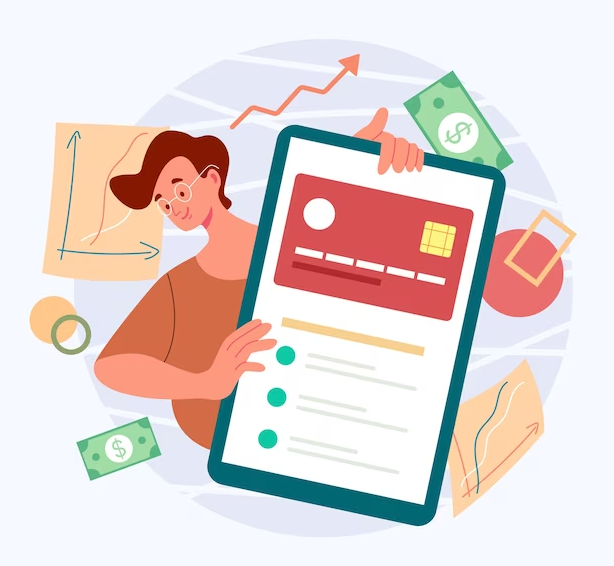When it comes to managing personal finances in the US, credit cards frequently take center stage in discussions. A crucial feature of credit cards is revolving credit, which can offer significant advantages but also present challenges for cardholders. Understanding how revolving credit operates is essential for effective financial management.
This comprehensive guide will walk you through the fundamentals of revolving credit, including how it functions, the benefits it provides, and the potential pitfalls to avoid. We’ll cover key concepts such as credit limits, interest rates, minimum payments, and how revolving credit impacts your credit score.
Additionally, we’ll provide practical tips for managing your credit card effectively to maximize its benefits and maintain financial health. Whether you’re new to credit cards or looking to improve your financial strategy, this guide will help you navigate the world of revolving credit with confidence.
What is revolving credit?

Revolving credit is a type of credit that allows you to borrow money up to a certain limit, pay it back, and borrow again. Unlike installment loans, where you receive a lump sum and make fixed payments over a set period, revolving credit offers more flexibility. Credit cards are the most common example of revolving credit.
How does revolving credit work?
- Credit Limit: Your credit card issuer sets a maximum amount you can borrow, known as your credit limit. This limit is determined based on factors like your credit score, income, and credit history.
- Monthly Billing Cycle: Each month, you’ll receive a statement showing your balance, minimum payment due, and due date. The balance is the total amount you owe for that billing cycle.
- Minimum Payment: You’re required to make at least the minimum payment by the due date to avoid late fees and potential damage to your credit score. However, paying only the minimum means you’ll carry a balance and incur interest charges.
- Revolving Balance: If you don’t pay off your entire balance, the remaining amount carries over to the next billing cycle. This is called a revolving balance. Interest is charged on this unpaid balance, which can accumulate quickly if only the minimum payments are made.
- Interest Rates: Credit cards typically have high-interest rates, known as the Annual Percentage Rate (APR). The APR is applied to your outstanding balance, so carrying a balance can become expensive.
- Credit Utilization: This refers to the percentage of your available credit that you’re using. Keeping your credit utilization low (ideally below 30% of your credit limit) can positively impact your credit score.
Advantages of revolving credit
- Flexibility: Revolving credit offers flexibility in how much you borrow and when you repay it. This can be particularly useful in managing cash flow and handling unexpected expenses.
- Building Credit History: Responsible use of revolving credit, such as making timely payments and maintaining low balances, can help build and improve your credit history and score.
- Rewards and Benefits: Many credit cards come with rewards programs, cash back, and other perks. Using revolving credit wisely can allow you to take advantage of these benefits.
Challenges of revolving credit
- High-Interest Rates: As mentioned, credit cards typically come with high-interest rates. Carrying a balance can lead to significant interest charges, making it more difficult to pay off your debt.
- Debt Accumulation: It’s easy to accumulate debt with revolving credit if not managed carefully. Spending beyond your means and making only minimum payments can lead to a cycle of debt.
- Impact on Credit Score: If you miss payments or use too much of your available credit, it can negatively affect your credit score. This can make it more challenging to obtain credit in the future.
Tips for managing revolving credit
- Pay Your Balance in Full: To avoid interest charges, aim to pay off your balance in full each month. This will also help you maintain a good credit score.
- Make Payments on Time: Set up reminders or automate payments to ensure you never miss a due date. Late payments can result in fees and damage your credit score.
- Monitor Your Spending: Keep track of your spending to ensure you’re not exceeding your budget. Many credit card issuers offer apps or online tools to help you monitor your account activity.
- Use Alerts: Set up alerts for due dates, spending limits, and balance updates to stay informed about your credit card usage.
- Review Your Statements: Regularly review your credit card statements for any errors or unauthorized charges. Dispute any discrepancies with your issuer promptly.
- Consider Your Credit Utilization: Keep your credit utilization ratio low. Aim to use less than 30% of your available credit to maintain a healthy credit score.
Common misconceptions about revolving credit
- “Revolving Credit is Bad”: While revolving credit can lead to debt if mismanaged, it’s not inherently bad. Used wisely, it can provide financial flexibility and help build a positive credit history.
- “Paying the Minimum is Fine”: Paying only the minimum amount due can lead to high-interest charges and prolonged debt. It’s better to pay more than the minimum whenever possible.
- “All Credit Cards Are the Same”: Credit cards vary widely in terms of interest rates, rewards, fees, and benefits. It’s important to choose a card that aligns with your financial goals and spending habits.
Conclusion
Revolving credit, often associated with credit cards, provides a flexible method for managing your finances, allowing you to borrow up to a certain limit and pay back over time. However, to fully benefit from this financial tool and avoid common pitfalls, it’s essential to handle it with care.
Understanding the mechanics of revolving credit is the first step. This involves grasping how interest accrues on outstanding balances, the implications of minimum payments, and the impact of credit utilization on your credit score. To make the most of your credit card and avoid costly mistakes, it’s important to follow sound financial practices.
Staying informed about your credit card terms, making payments on time, and managing your balance responsibly are key strategies. By adopting these practices, you can leverage revolving credit not only to build a strong credit history but also to enjoy the benefits of responsible credit card use.
Whether you’re just starting with credit cards or aiming to refine your financial habits, mastering the concept of revolving credit is a crucial step towards achieving financial health and long-term success.






